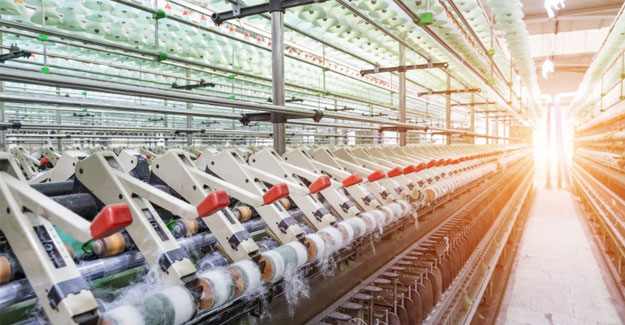
Textile Is A Sunrise Industry-Part II
Exploring the points to justify that our textile industry is a sunrise industry, I have been attempting to meet eminent persons in our field and understanding their attitudes, strategy, visionary thinking, which made their textile business a success.
Yarn Engineering And Reverse Engineering
S. Murugan
"Do we use the same kind of cell phone that we used, say, five years ago?" asked the executive. The executive was the head of garment development of a big brand. My thirst to explore further on the subject of textile industry being a sunrise industry, had brought me to a big brand in Bangalore and I was talking with him about the latest trend in textiles. Though I was little confused with his question, I started to play in my mind all the models of cell phones that I used for the past several years right from Nokia handset 1100 to latest iPhone X in a flash. "Certainly not! In keeping pace with ever changing technology, some even change their cell phone every year," I replied. "But, tell me, what changes have you observed in your clothing for the past ten or twenty years?" He asked. 'Except some changes in colour, or design or the fit, I did not see a big change in my clothing,' I was thinking. And I told him so. "It is time for us to rethink about reverse engineering in our textile field," he declared. "Reverse engineering?!" I exclaimed. Combining fashion and function in clothing "Actually, reverse engineering is the term used to refer to the process of copying another company's product and eventually make the same product with enhanced design. But what we need in our textile industry is to study the real requirements and needs of the final consumer and engineer our products accordingly", he explained. "As far as my knowledge goes, the people, the ultimate customers, require only one thing. That is the LOW price!" I said and laughed. He said, "As you say that is also the main requirement. But it is not the only requirement. Clothing should do more than comply to fashion trends, it should do certain kinds of functions." "By functions, what do you mean?" I asked him. "It should have the function of protecting the wearer from the environment, from harmful UV rays, etc, or should be anti-bacterial or be wrinkle-free or quick dry or smart fabric. The list can go on," he replied and in the same breath continued, "These are all for ultimate customers, but in the textile process chain, there is also a supplier and customer in each process. The supplier in each process must design and engineer his products to give value to the subsequent customer". "I understand sir. Now, tell me, what kind of functions do you expect from yarn?" I asked him. Yarn engineering adds value "We call it yarn engineering. It is the process of constructing yarn using procedures designed to change its properties. Also, the purpose of yarn engineering is to optimise the performance and minimise the cost of textile products through the process of selecting most suitable and effective raw materials, fibre type, manufacturing method and yarn structure," he explained. "Tell me about how you have used yarn engineering?" I asked him. "Yes! That yarn is called Wrapper Yarn!" he said proudly. "Wrapper Yarn!" I again exclaimed. I had thought there would be so many more things in store with him for me to exclaim for. "Yes! We developed this yarn along with Amsler India. With an additional attachment with Amsler core system we can make wrapper yarn," he explained. "In our sportswear application, we need polyester and cotton blended yarn. The polyester is to wick out excessive sweat and cotton is for comfort and absorption of sweat to some extent. Our aim was to have both fibres at 50:50 blend ratio. Unfortunately, there was more pilling on the fabrics with polyester fibres which could not be removed in subsequent washings. As you know, the hairiness on cotton yarn will also make pilling upon abrasion, however, they get removed in washings. Polyester being a stronger fibre, the pilling could not be removed. So, to avoid this, we reduced the polyester blend ratio to 20% and using compact yarns we had been somewhat managing the pilling issue. But, with introduction of wrapper yarn our problem has been solved. "The wrapper yarn is produced by wrapping polyester filament yarn on the drafted cotton fibres. Though it seems like doubled yarn, the structure is different in that the filament has been wrapped over the drafted fibres when they emerge from the front rollers -nip, and the cotton portion will have soft twist. When we used this yarn in our application, the pilling value as measured in Martindale instrument is 4.5! The spirality of the knitted fabric is zero! And there was almost less shrinkage in both length and breadth directions! Out of all, we didn't require a bio-wash to avoid pilling which would otherwise cost us about Rs 25 per kg of fabric. We are happy that with this yarn we could serve the sports persons better." Though he was the executive in a brand, I was happy to notice his excellent knowledge in spinning. "I will tell about further applications" he said. I sharpened my ears to hear his explanation (Mr S Murugan is MD, Texdoc Online Solution Pvt. Ltd)Textile Excellence
Subscribe To Textile Excellence Print Edition
If you wish to Subscribe to Textile Excellence Print Edition, kindly fill in the below form and we shall get back to you with details.








